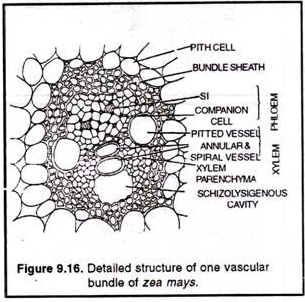ADVERTISEMENTS:
Although food is indispensible to the maintenance of life, it can also be responsible for ill health. A simple insufficiency will lead to marasmus (protein-energy deficiency) while over-reliance on staples low in protein, such as cassava, produces the condition known as kwashiorkor.
A diet may provide adequate protein and energy but be lacking in specific minerals or vitamins giving rise to characteristic deficiency syndromes such as goitre (iodine deficiency), pellagra (nicotinic acid), beriberi (thiamine) and scurvy (ascorbic acid).
Foods are complex mixtures of chemicals and often contain compounds that are potentially harmful as well as those that are beneficial (Figure 6.1). Several vitamins are toxic if consumed in excessive amounts and many food plants produce toxic secondary- metabolites to discourage their attack by pests.
Potatoes contain the toxic alkaloid solanine. Normally this is more concentrated in aerial parts of the plants and the peel which are not eaten, but high levels are also found in green potatoes and potato sprouts which should be avoided.
Cassava contains cyanogenic glycosides which produce hydrogen cyanide on hydrolysis. Similar compounds are also present in apple seeds, almonds, lima beans, yams and bamboo shoots. The body’s detoxification pathway converts cyanide to thiocyanate which can interfere with iodine metabolism giving rise to goitre and cretinism.
Traditional methods of preparing cassava eliminate the acute toxicity problem from hydrogen cyanide, but the increased incidence of goitre and cretinism in some areas where cassava is a staple may be a reflection of chronic exposure.
ADVERTISEMENTS:
Legumes or pulses contain a number of anti-nutritional factors such as phytate, trypsin inhibitors and lectins (haemagglutinins). Many of these are destroyed or removed by normal preparation procedures such as soaking and cooking. Even so, red kidney beans are still responsible for occasional outbreaks of food poisoning when they have been insufficiently cooked to destroy the lectins they contain.
Lathyrism is a more serious condition associated with a toxin in the pulse Lathyrus sativa which can be a major food item in North African and Asian communities during times of famine. In favism, an enzyme deficiency predisposes certain individuals to illness caused by glycosides in the broad bean, Vicia faba.
To some extent toxic or anti-nutritional characteristics can be bred out of cultivars intended for human consumption, although the problem cannot be eliminated completely. For affluent consumers in the developed world, particularly toxic foods can be avoided since alternatives are normally available in plenty. This is not always the case in poorer countries where these diet-related conditions are far more common.
It is however important to keep a sense of proportion in this. Eating inevitably exposes us to natural chemicals whose long-term effects on health are not known at present. Provided such foods form part of a balanced diet and are correctly prepared, the risks involved are generally acceptable, particularly when compared to the certain outcome should immoderate fear of food lead to complete abstinence.
In addition to the hazards posed by natural toxins that are an intrinsic feature of their composition, foods may also act as the vehicle by which an exogenous harmful agent may be ingested. This may be a pesticide, some other chemical contaminant added by design or accident, a micro-organism or its toxin. Various causes of food borne illness are summarized in Table 6.1.
Here we are concerned primarily with microbiological hazards (Table 6.2). These are considered in some detail subsequently, but to justify this attention, we must first provide some assessment of their importance.





